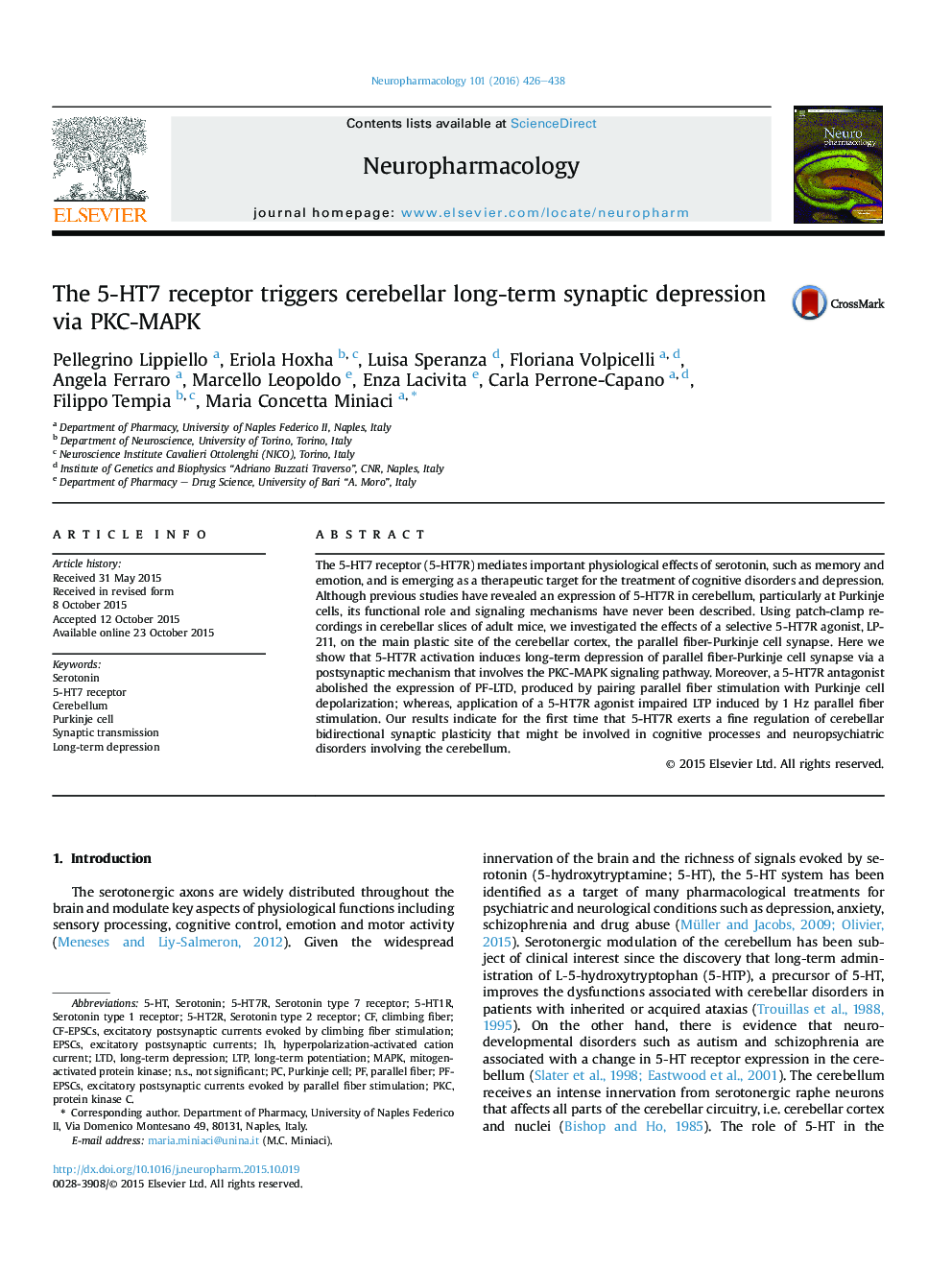| Article ID | Journal | Published Year | Pages | File Type |
|---|---|---|---|---|
| 2493133 | Neuropharmacology | 2016 | 13 Pages |
•5-HT7R activation induces LTD of parallel fiber-Purkinje cell synapse.•5-HT7R-induced depression requires postsynaptic activation of PKC and MAPK.•5-HT7R activation blocks LTP induced by 1 Hz parallel fiber stimulation.•5-HT7R antagonist impairs LTD produced by PF stimulation plus PC depolarization.•We provide a novel mechanism by which serotoninergic inputs shape cerebellar network.
The 5-HT7 receptor (5-HT7R) mediates important physiological effects of serotonin, such as memory and emotion, and is emerging as a therapeutic target for the treatment of cognitive disorders and depression. Although previous studies have revealed an expression of 5-HT7R in cerebellum, particularly at Purkinje cells, its functional role and signaling mechanisms have never been described. Using patch-clamp recordings in cerebellar slices of adult mice, we investigated the effects of a selective 5-HT7R agonist, LP-211, on the main plastic site of the cerebellar cortex, the parallel fiber-Purkinje cell synapse. Here we show that 5-HT7R activation induces long-term depression of parallel fiber-Purkinje cell synapse via a postsynaptic mechanism that involves the PKC-MAPK signaling pathway. Moreover, a 5-HT7R antagonist abolished the expression of PF-LTD, produced by pairing parallel fiber stimulation with Purkinje cell depolarization; whereas, application of a 5-HT7R agonist impaired LTP induced by 1 Hz parallel fiber stimulation. Our results indicate for the first time that 5-HT7R exerts a fine regulation of cerebellar bidirectional synaptic plasticity that might be involved in cognitive processes and neuropsychiatric disorders involving the cerebellum.
Graphical abstractFigure optionsDownload full-size imageDownload as PowerPoint slide
